Author: Matt Del Fiacco
Fermentation generally occurs in a vessel that gets closed off from the outside world with an airlock or blowoff tube, which restricts the ingress of unwanted beer spoilers such as microbes and oxygen. Another effect of fermenting in a closed environment is that it creates a relatively small amount of back-pressure that some some believe can have an impact, particularly when using certain yeast strains. Author and podcast host Drew Beechum often talks about his practice of fermenting Saisons in an open environment where he uses foil in place of an airlock, a practice he claims reduces the risk of a stalled fermentation.
Brülosophy Patron Mark Pellicle, who runs the Big Beer Reviews YouTube channel, expressed interest in this topic and wondered if perhaps oxygen availability played more of a role in reducing the chances of a stalled fermentation than back-pressure. It’s widely accepted that yeast require oxygen for healthy fermentation, and Mark posited that a beer fermented in an open environment has more access to oxygen, which can lead to better attenuation.
Mark also hypothesized that a contributing factor to the oft reported stalled fermentation when using certain Saison yeasts is that they are of the saccharomyces cerevisae var. diastaticus species. Indeed, the popular Saison Dupont yeast used in a prior xBmt on this same topic is a known diastaticus variant, though countering the experiences of many, both of those beers attenuated similarly. One explanation for the lack of difference that was proposed by a number of people is that the closed fermentation fermenter was opened numerous times for hydrometer samples, which to Mark’s point, may have allowed in enough oxygen for the yeast to fully attenuate.
Given the numerous reports of brewers who have experienced a stalled fermentation when using certain Saison strains, I was admittedly confounded by the aforementioned xBmt results. In collaboration with Patron Mark Pellicle, we set out to retest the impact of open fermentation on Saison, only this time with a higher OG wort produced with a grist heavy in raw wheat.
| PURPOSE |
To evaluate the differences between a high OG Saison fermented in a closed environment and one fermented in an open environment.
| METHODS |
Mark and I settled on a recipe for this xBmt we felt would properly accentuate any differences caused by the variable.
Under Siege
Recipe Details
| Batch Size | Boil Time | IBU | SRM | Est. OG | Est. FG | ABV |
|---|---|---|---|---|---|---|
| 5.5 gal | 90 min | 25.4 IBUs | 4.3 SRM | 1.078 | 1.011 | 8.9 % |
| Actuals | 1.078 | 1.006 | 9.6 % | |||
Fermentables
| Name | Amount | % |
|---|---|---|
| Wheat, Unmalted (Rahr) | 10 lbs | 58.82 |
| Pilsner (2 row) (Gambrinus) | 7 lbs | 41.18 |
Hops
| Name | Amount | Time | Use | Form | Alpha % |
|---|---|---|---|---|---|
| Magnum | 15 g | 90 min | First Wort | Pellet | 12 |
| East Kent Goldings (EKG) | 14 g | 20 min | Boil | Pellet | 5 |
Yeast
| Name | Lab | Attenuation | Temperature |
|---|---|---|---|
| Rustic (B56) | Imperial Yeast | 74% | 68°F - 80°F |
Notes
| Water Profile: Ca 54 | Mg 11 | Na 25 | SO4 81 | Cl 65 |
Download
| Download this recipe's BeerXML file |
A couple days ahead of time, I made two starters of Imperial Yeast B56 Rustic, which is listed as a S. cerevisiae var. diastaticus species.
After collecting two identical volumes of water on brew day, I turned the elements on to heat them up.
Next, I weighed out and milled identical sets of grain for either batch.
We opted for a Hochkurz step mash with this beer and incorporated the grains before checking to ensure both batches were at the same first step temperature.
Following the initial 40 minute rest at 144°F/62°C, I raised the temperature of each mash to 158°F/70°C and left them alone for another 40 minutes.
With each mash complete, I removed the grains and brought the worts to a boil.
When the 60 minute boils were finished, I homogenized the worts by racking half of each through a CFC on their way to fermentation kegs then took refractometer readings confirming both hit the same intended OG.
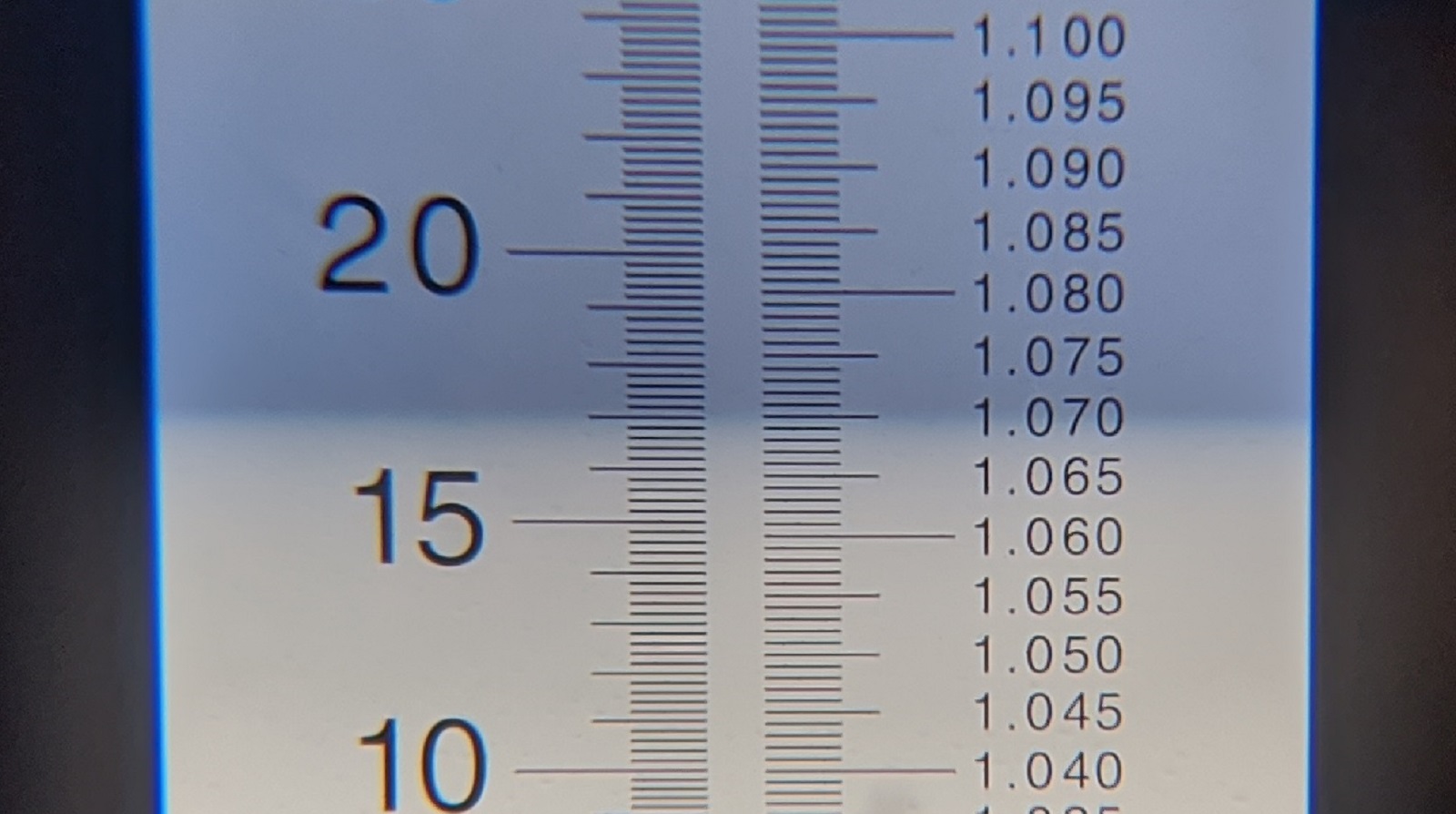
The filled kegs were placed in my fermentation chamber controlled to 68°F/20°C before a yeast starter was pitched into each one. At this point, I attached a lid and blowoff tube to one fermentation keg while the other had its opening covered with foil.
Hydrometer measurements taken 2 days later showed the open fermentation beer had attenuated a bit more than its closed fermentation counterpart.
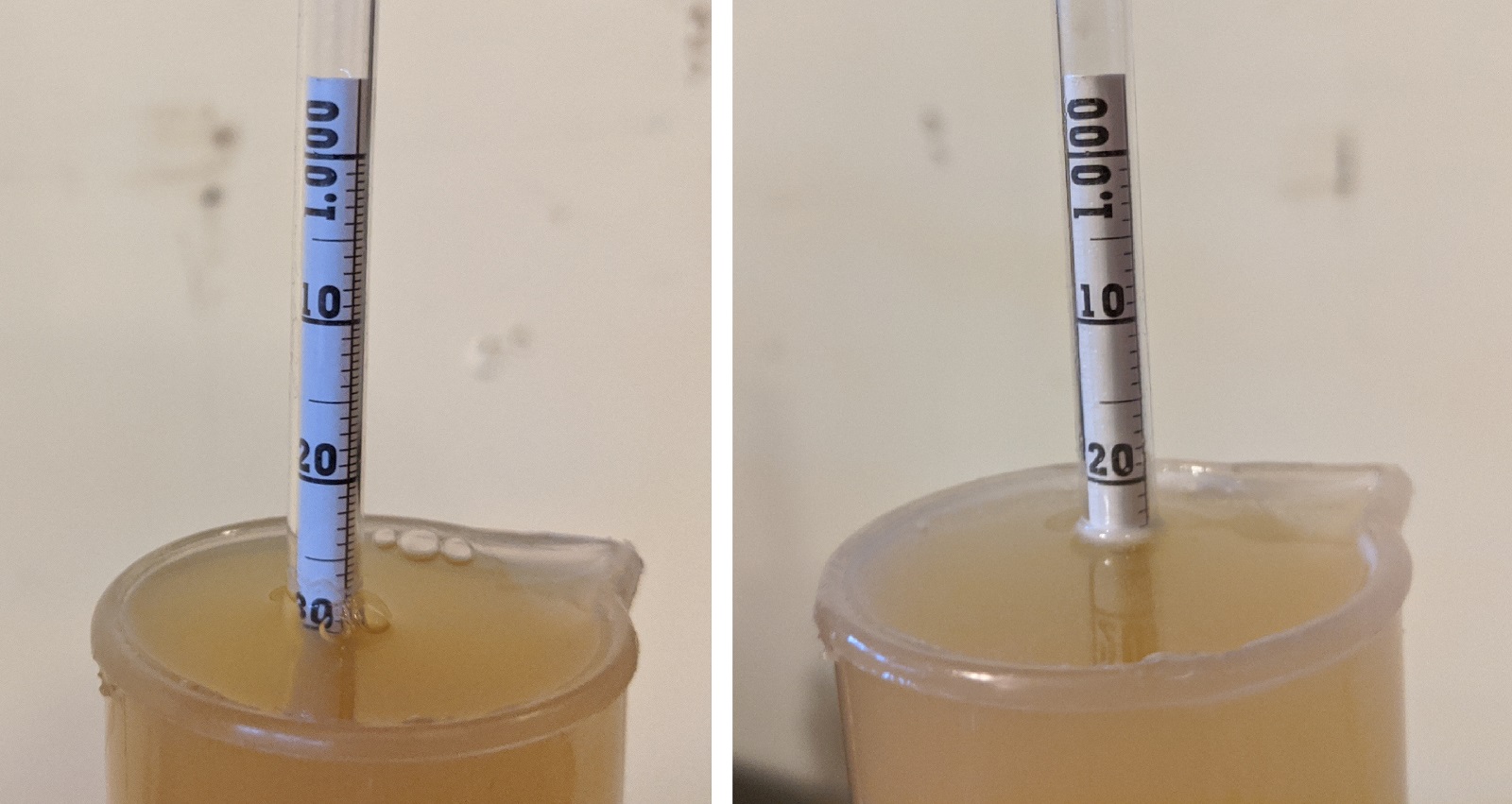
With signs of activity absent a week later, I took another set of hydrometer measurements indicating the closed fermentation beer finished with a slightly higher FG than the closed fermentation batch.
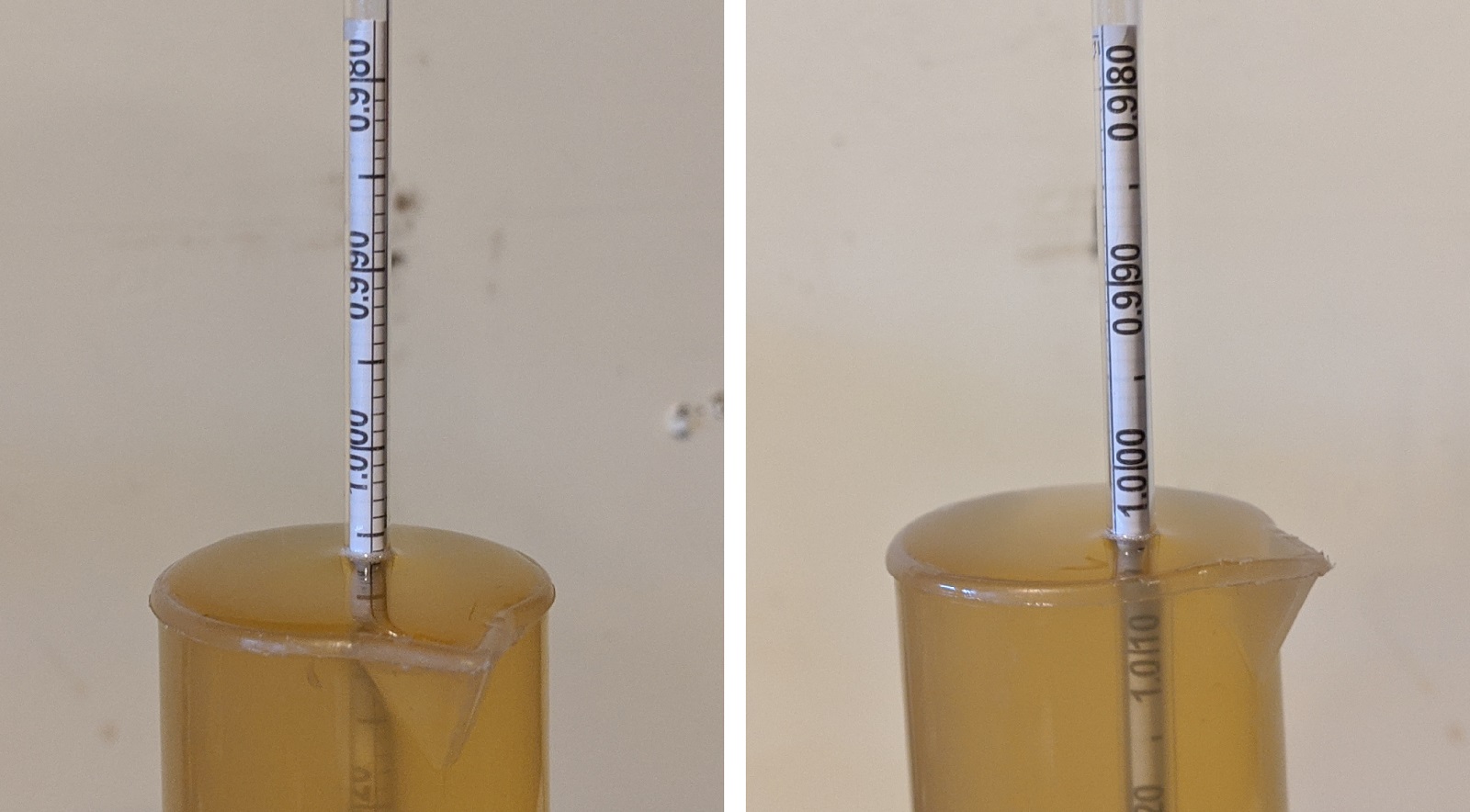
At this point, I pressure transferred the beers to sanitized serving kegs.
The filled kegs were placed in my cool keezer where they were burst carbonated and left to condition for a couple weeks before being served to tasters.
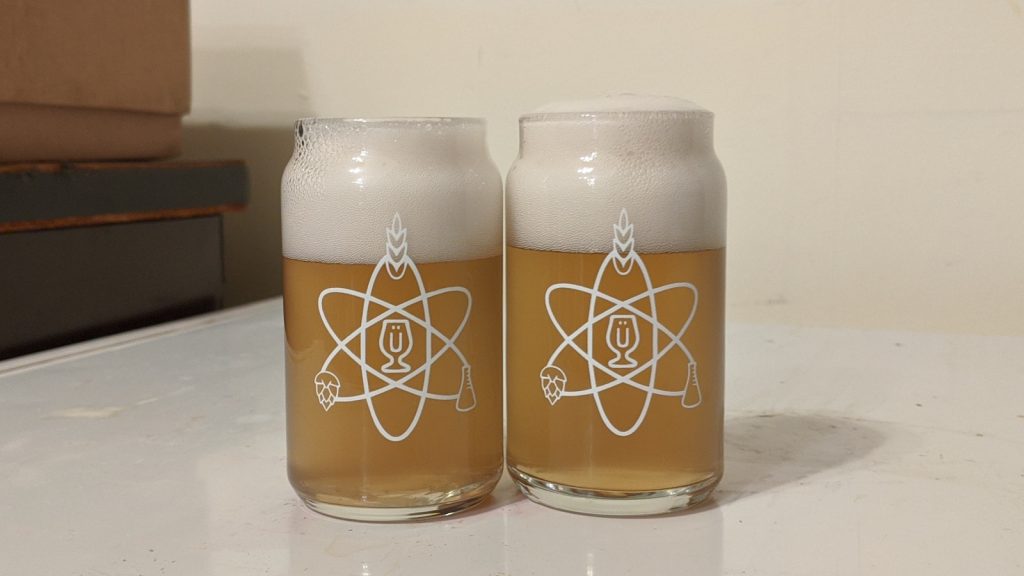
| RESULTS |
A total of 21 people of varying levels of experience participated in this xBmt. Each participant was served 2 samples of the closed fermentation beer and 1 sample of the open fermentation beer in different colored opaque cups then asked to identify the unique sample. At this sample size, 11 tasters (p<0.05) would have had to identify the unique sample in order to reach statistical significance, though 12 (p=0.021) did, indicating participants in this xBmt were able to reliably distinguish a Saison fermented in a closed vessel from one fermented in an open vessel.
The 12 participants who made the accurate selection on the triangle test were instructed to complete a brief preference survey comparing only the beers that were different. A total of 6 tasters reported preferring the closed fermentation beer, 3 liked the open fermentation beer more, 1 had no preference despite noticing a difference, and 2 reported perceiving no difference.
My Impressions: Out of the 5 semi-blond triangle tests I attempted, I identified the odd-beer-out 4 times. As good as this performance was, telling the beers apart was quite difficult, they definitely had strong similarities. However, I perceived a stronger banana aroma in the open fermented beer compared to the one fermented in a closed vessel. I felt both Saisons were very dry with a pleasant grainy character behind notes of pepper and light clove. Overall, the beers were good, but not my ideal Saison.
| DISCUSSION |
Open fermentation is an age-old method practiced by brewers around the globe for various reasons. When it comes to Saison, certain commonly used yeast strains have a tendency to stall, with one proposed solution involving fermenting in an open environment, thus reducing back-pressure and increasing oxygen exposure. In addition to the open fermentation Saison in this xBmt attenuating more than the closed fermentation version, tasters were able to reliably distinguish the beers, indicating the variable had a perceptible impact.
It’s impossible to determine whether the culprit in this xBmt was back-pressure or oxygen given the testing conditions, and while it may be one or the other, it could also be that both factors played a role. The fact the objectively observed differences in fermentation contradict previous xBmt findings could be an indication that even brief instances of opening an otherwise closed vessel is enough to ensure adequate attenuation.
I was not expecting this variable to have a perceptible impact and was surprised not only that blind tasters could tell them apart, but I could as well. Again, without knowing exactly what caused this difference, we can’t really make any solid conclusions, just that something about open fermentation possibly has an impact when fermenting with Saison yeasts. As for me, I won’t be adopting open fermentation as my go-to approach, but for anyone who has struggled with stuck fermentations when making Saison, it may be worth a shot.
If you have any thoughts about this xBmt, please do not hesitate to share in the comments section below!
Support Brülosophy In Style!
All designs are available in various colors and sizes on Amazon!
Follow Brülosophy on:
FACEBOOK | TWITTER | INSTAGRAM
If you enjoy this stuff and feel compelled to support Brulosophy.com, please check out the Support page for details on how you can very easily do so. Thanks!


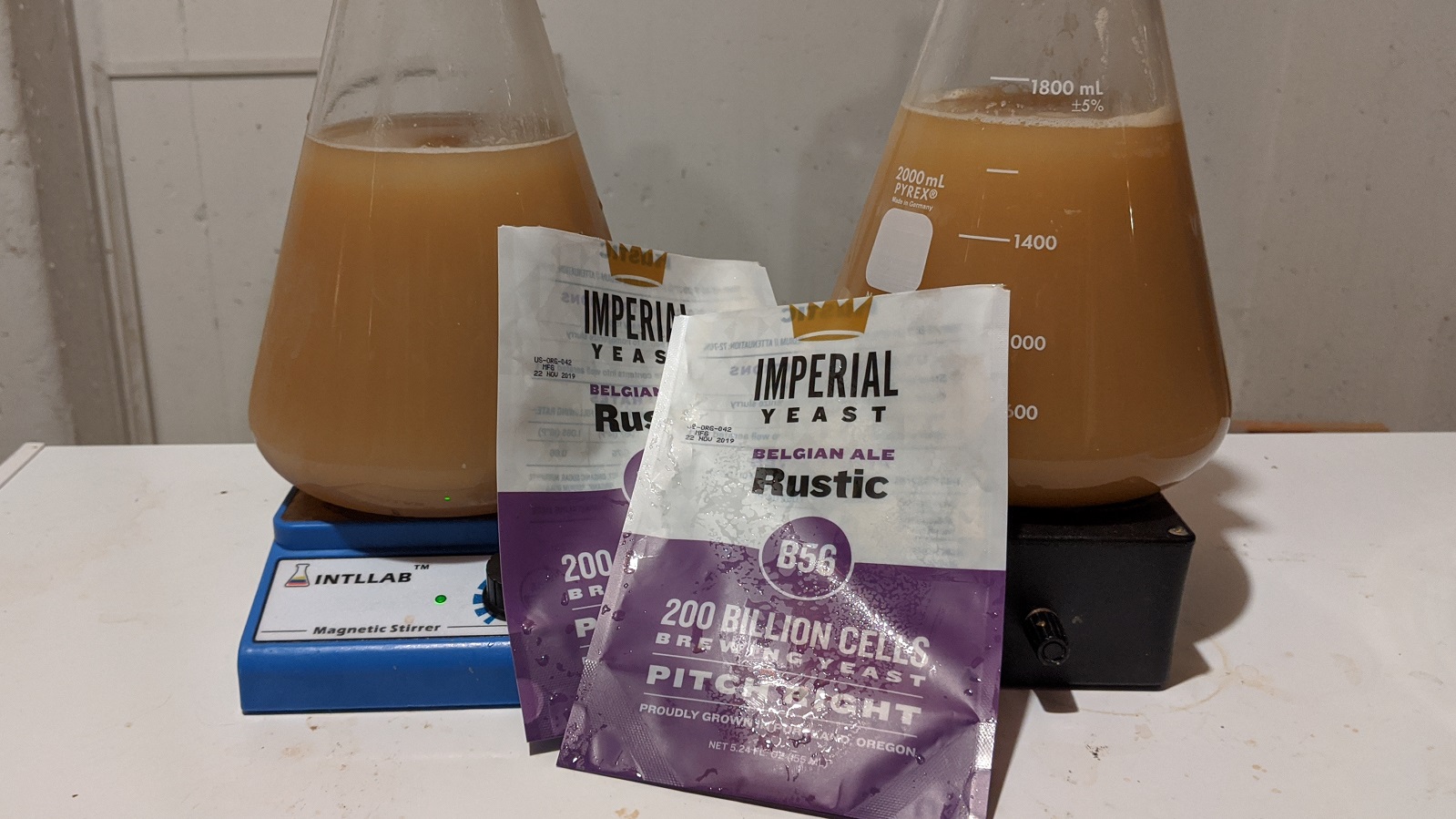
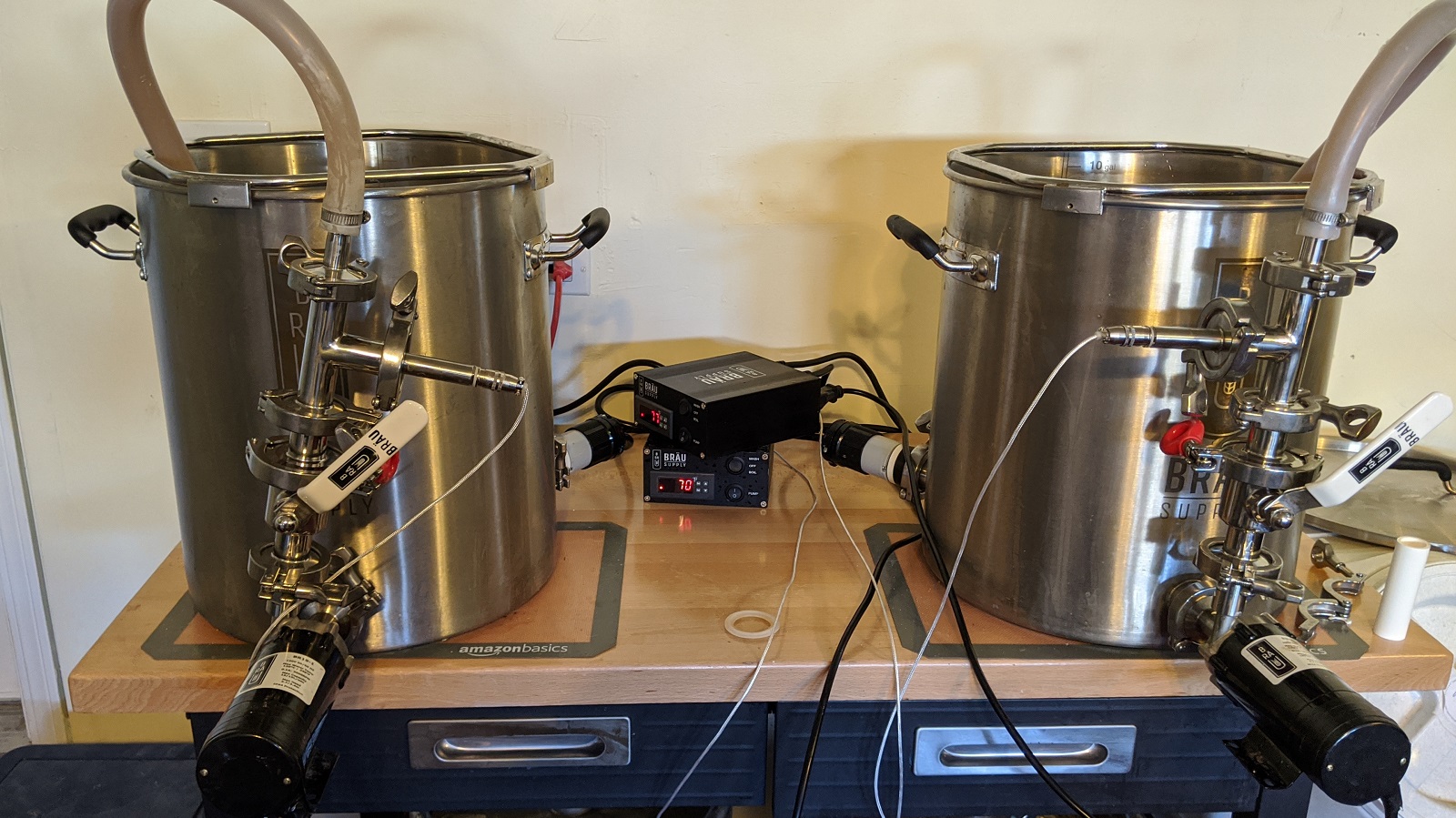
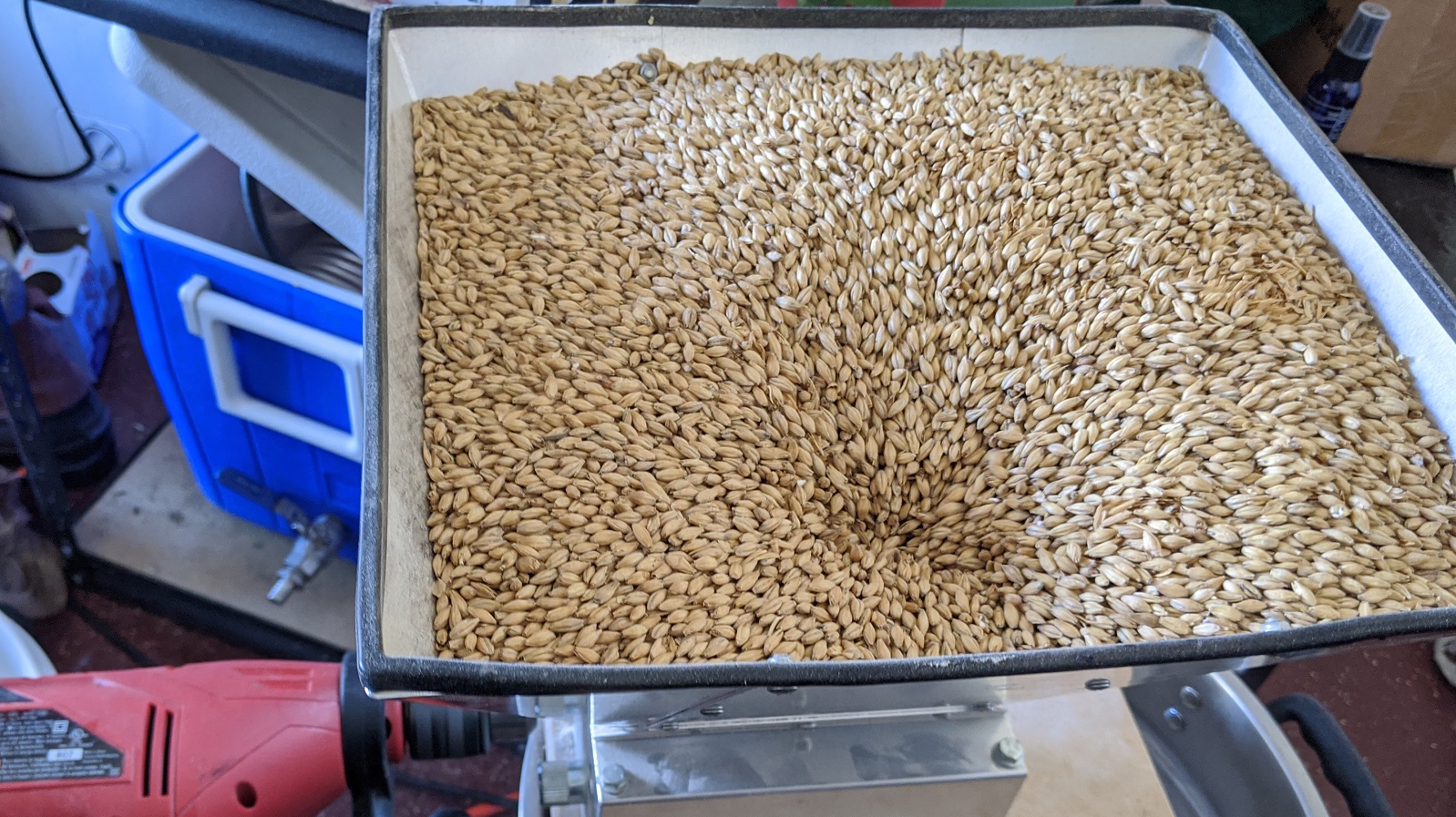
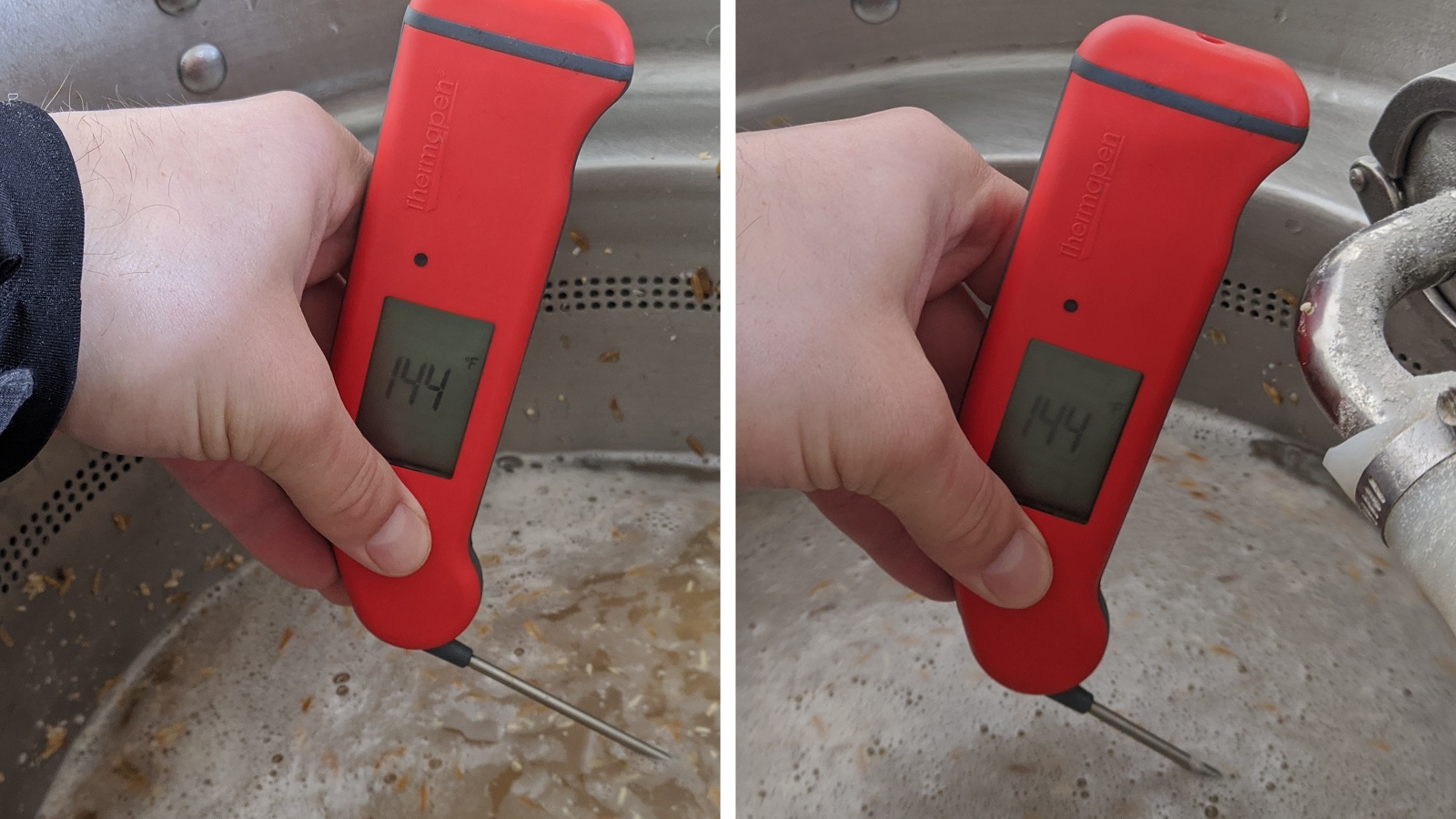
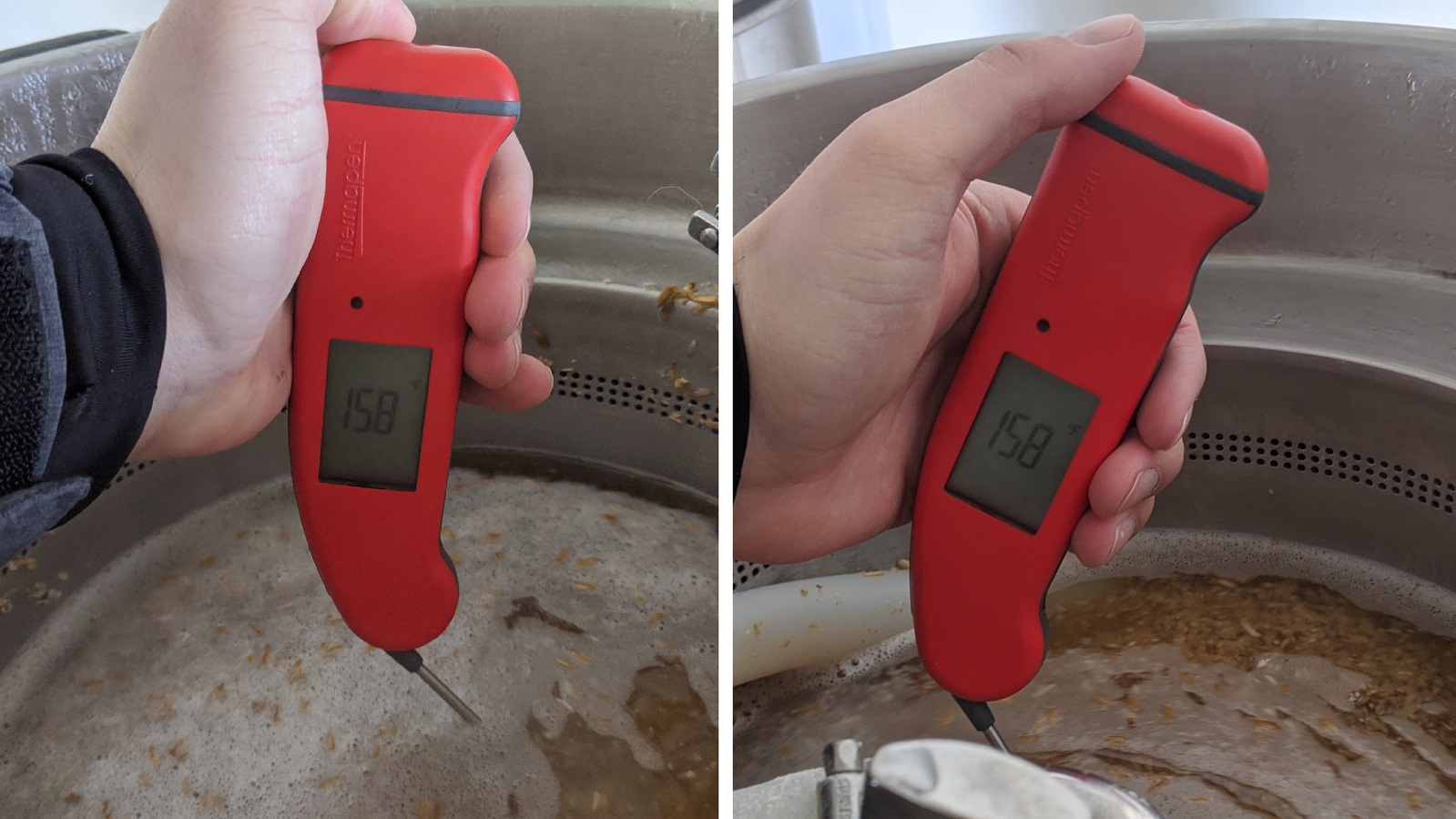
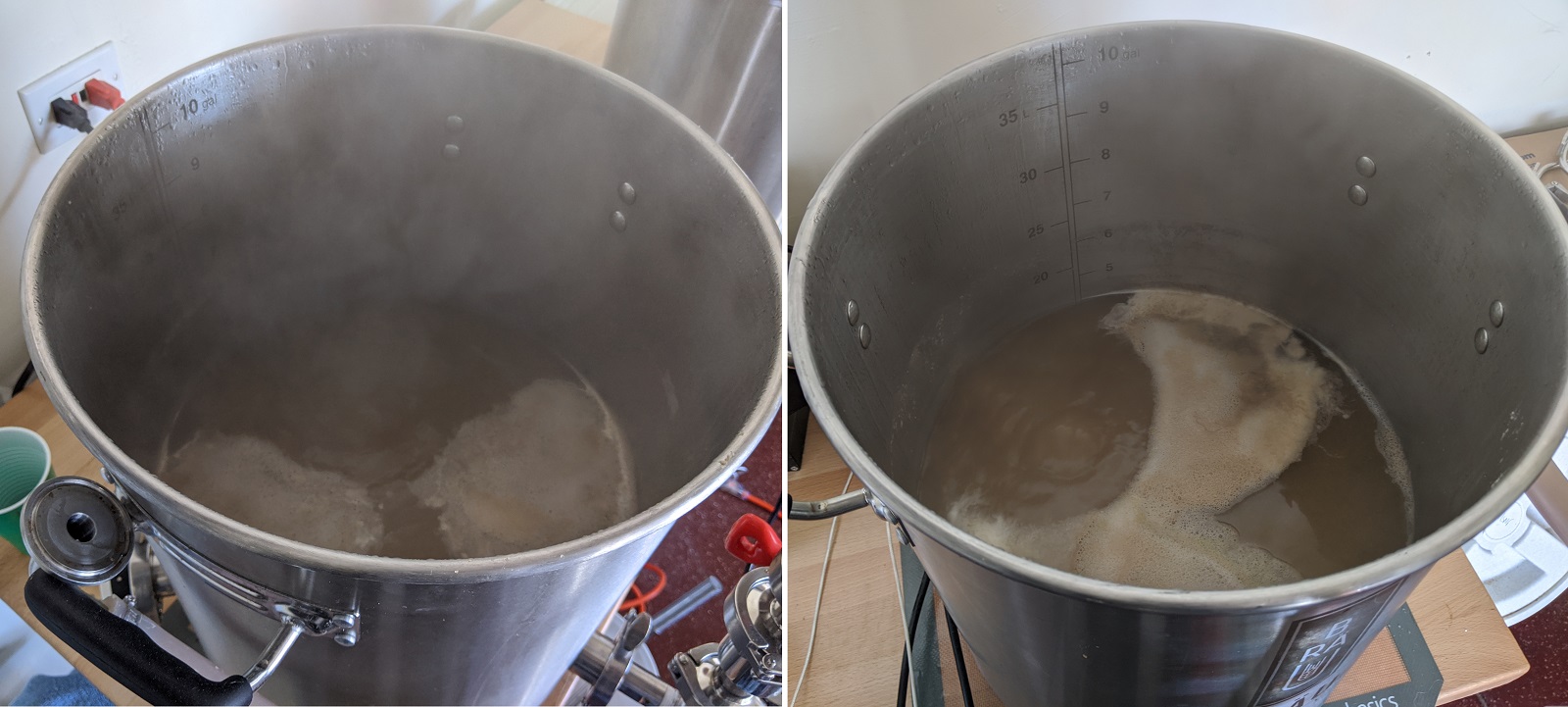
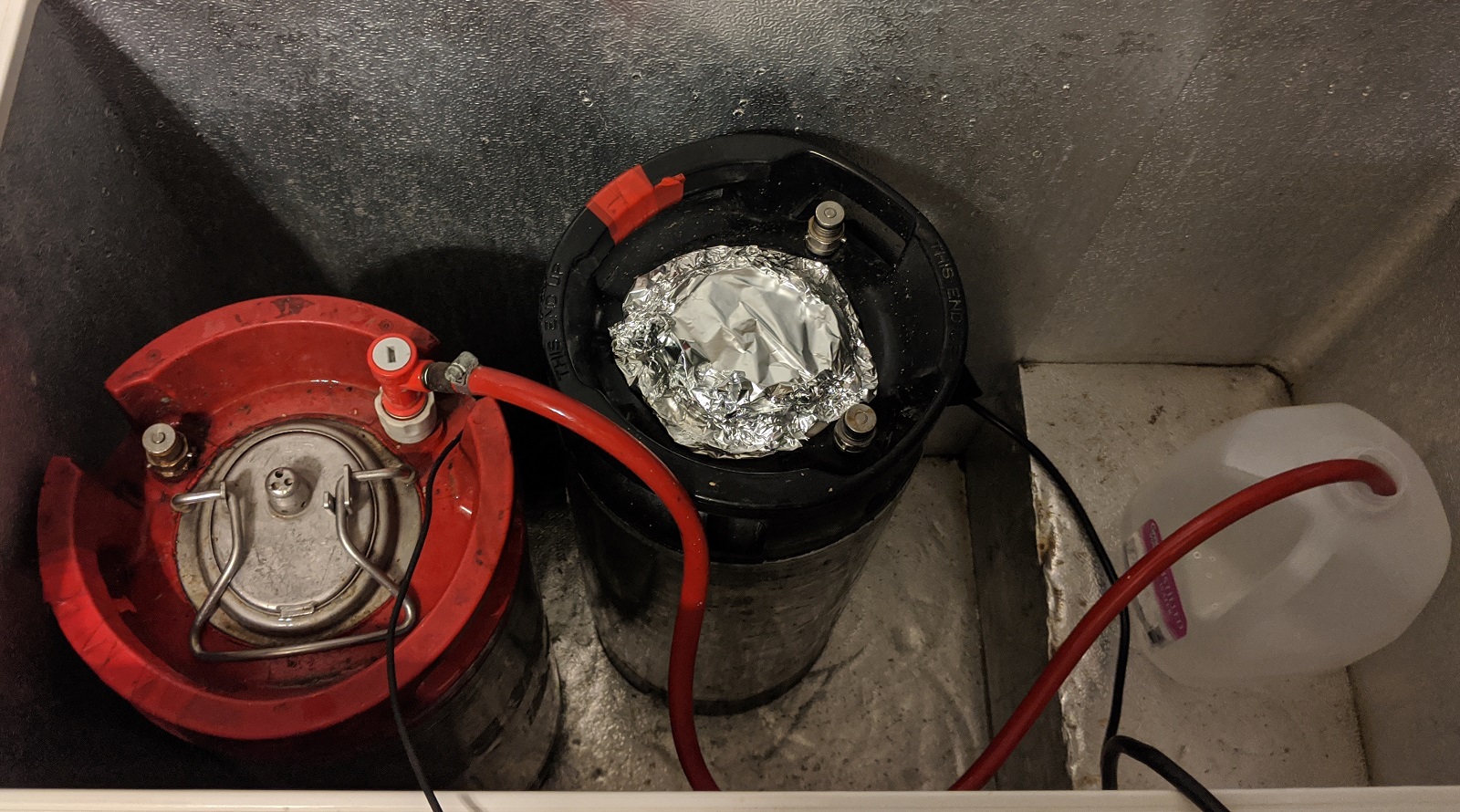
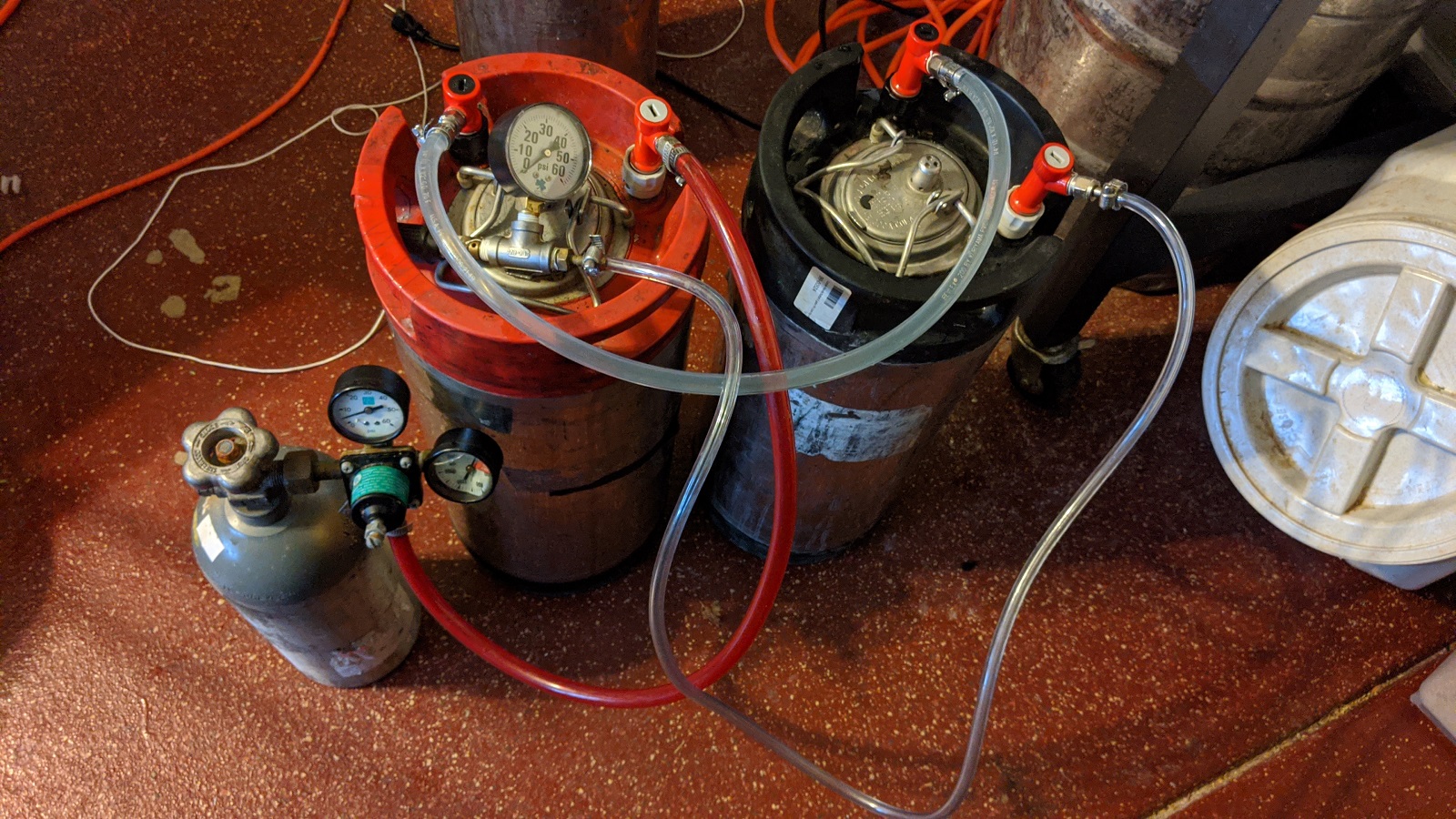











18 thoughts on “exBEERiment | Impact Of Open Fermentation On A High OG Saison”
The grain and hops list seems to be missing (there’s a BEERXML tag instead).
Thanks for catching this, I’ll make sure it gets updated ASAP
I’m confused by the “back” in back pressure. Doesn’t back pressure mean a negative pressure inside the fermentation vessel? If you have a negative pressure wouldn’t that suck in oxygen through the blow off tube or airlock (and some airlock water). So is there really a distinction between the role of oxygen and “back pressure”?
My understanding is that the opposite, it is positive pressure in the fermenter generated by the force it takes for the gas to escape the airlock, which can keep some co2 in solution as well as increase pressure in the system (alongside things like hydrostatic and osomotic).
Perhaps an alternate way to test it (removing the oxygen variable and just concentrating on pressure would be to use a blow off tube on one and a spunding valve set to 12-15 psi on another. That way you would have isolated the pressure variable
The pressure variable is a part of the “open ferment” variable, I agree a spunding valve would be a better way to isolate it! I believe it has been done at least once, would be interesting to get more data points for sure. Potentially two spunding valves, one set to 0 and one set to 15.
Looking at my brewing notes, my saisons have taken 3-4 weeks to ferment out to full dryness, so I suspect your closed-ferment saison at 9 days hadn’t finished, even though readings two days apart were the same, and the gravity would have fallen further if given more time. So perhaps the comparison is between a stall/unfinished beer and a more fully fermented one? Though the banana flavour suggests there might be a temp difference too, perhaps due to the less vigorous fermentation.
Also, bearing in mind the additional pressure on the closed beer amounts only to the weight of water between the two levels in the airlock tube (maybe a couple of teaspoons), we’re talking about a negligible force that far smaller than daily fluctuations in ambient air pressure and hence very unlikely to have an effect on the beer.
This is a really interesting point, one that I’ll need to take into account for the next round. Much appreciated! I’m a bit perplexed by the aroma difference actually, as I’d thought that an open fermentation would provide less aromatic character.
And yes, I 100% agree, the pressure is minimal.
Really glad you did this xbmt again. I have had good success using open fermentation like this in the past. I’ve also used it on high OG beers, generally the first 36 hours, since I do not have O2 in my brewery. Maybe a good follow up xbmt to maybe narrow down the cause in FG would be to do another high OG beer with an English or American strain and hit one with an O2 wand and ferment closed. The other would receive no O2 from a wand but would be fermented open at least until peak fermentation starts to subside. Maybe you’ve done this one already, I can’t remember.
Also, I was interested to see the open fermentation had more esters. I always heard open fermentation caused less esters and closed would cause more??? Probably very strain dependent. Anyway, nice job!
Love reading these exbeeriments… keep ‘em coming. Just a couple discrepancies to clear up from this one:
-The recipe shows a 90 min boil (and 90 min hop addition), but the text says 60 min
-The recipe shows an actual OG of 1.046, but the text below says (and shows in the pic) 1.069
Cheers
Thanks for pointing these out! The 90 minute is accurate, I’ll update it. The OG should be fixed
What would your ideal saison be?
I know it isn’t very traditional, but I am very partial to Apex Predator by Off Color Brewing (interestingly enough, open fermented). I also don’t love the banana chracter, and the amount of grain-y ness is a bit much for me in this example.
How much oxygen is really available in a closed ferm chamber? Would be interesting to do this experiment in a different environment.
Agree! Might be better for one of the contributors with a gylcol based system so they can ferment out in the open.
Hey guys, glad to see this one got so much feedback. Just wanted to leave my two cents.
One of the things to consider with this experiment is that Diastaticus makes its own food. Diastaticus produces glucoamalyse enzyme, which slices up dextrins into fermentable sugars. I wanted to tease this variable out, which is why Matt used so much unmalted wheat.
It turns out that the gene that codes for glucoamalyse, STA1, is upregulated in the presence of oxygen. It’s not a logical leap to say that a stuck saison fermentation is because there is not enough oxygen, not because of back pressure or the magic ether that is open fermentation.
Regarding the significance of this experiment, I believe we have to look at oxygen again. Well, we all know oxidation can change the flavor of a beer. I speculate that because one fermentation likely finished first, it also had more time to slightly oxidize and produce different flavors.
Really looking forward to trying this beer. Thanks again Matt!
Hi! how do you ferment 5gal of wort in single keg? There is no headspace during fermentation?
Hey! I don’t, the recipes are adjusted for the website to reflect a standard batch size. I typically brew 4.5 gallon batches.